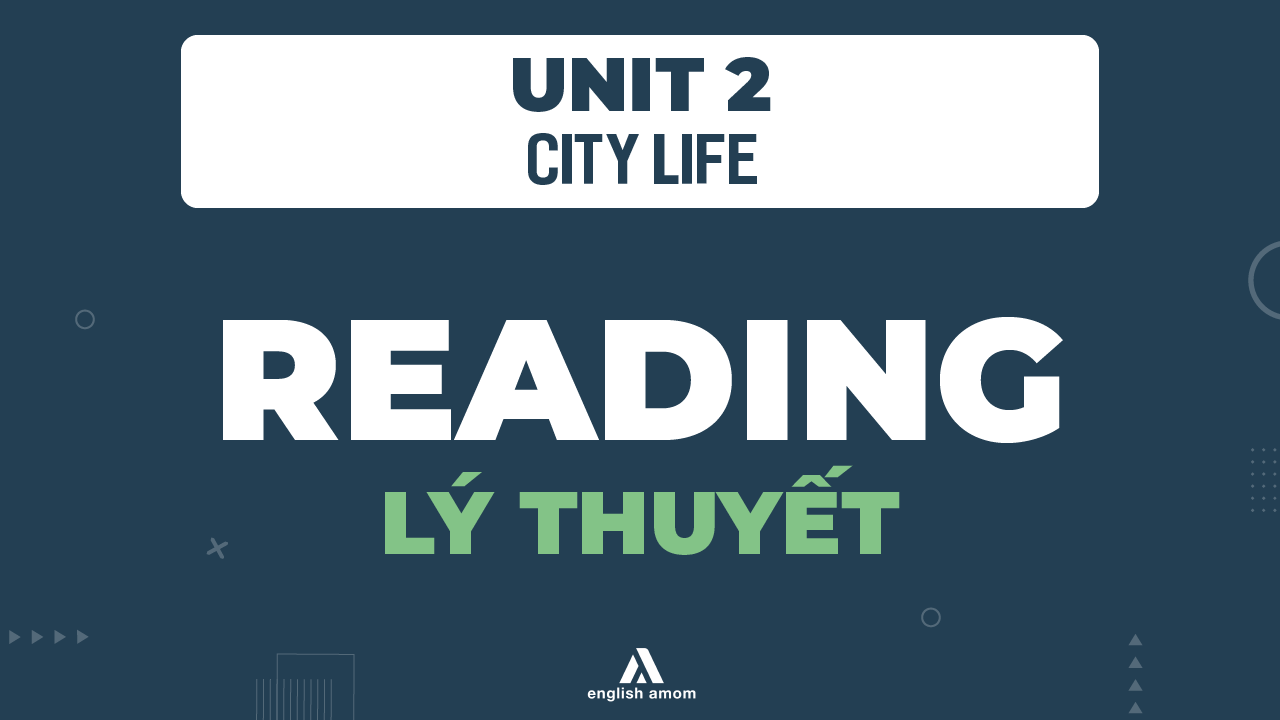
► Kênh hỏi đáp và giải thích thắc mắc kiến thức MIỄN PHÍ → truy cập LINK NHÓM: ENGLISH AMOM
► Kênh YOUTUBE hệ thống toàn bộ bài giảng CLIPS: truy cập LINK: ENGLISH AMOM CHANNEL
► Kênh TIKTOK: ENGLISH AMOM
1) Work in pairs. What features are important to you in a city? Put the following in order 1-8 (1 is the most important).
|
................................... |
transport |
|
................................. |
safety |
|
................................. |
education |
|
................................. |
cost of living |
|
................................. |
climate |
|
................................. |
entertainment |
|
................................. |
culture |
|
................................. |
convenvience |
ĐÁP ÁN:
- transport (n): phương tiện giao thông, vận tải
- safety (n): an toàn
- education (n): giáo dục
- cost of living (n.p): chi phí đời sống
- climate (n): khí hậu
- entertainment (n): sự giải trí
- culture (n): văn hóa
- convenience (n): sự tiện nghi
2) Read the passage quickly and find the information to fill the blanks.
1. The name of the organisation doing the survey:
2. The year of the survey:
3. The names of the best city and the worst cities:
Which is the best city in the world to live in? Every year, the Economist Intelligence Unit (EIU) conducts a fascinating survey to determine which cities around the world “provide the best or worst living conditions”. It uses factors such as climate, transport, education, safety, and recreational facilities in cities. It gives scores for each, and ranks the cities in order - from the best to the worst.
For the year 2014, the top 10 cities came from Australia, Canada, Europe, and New Zealand. Melbourne in Australia had the highest score, which means it is the most ‘liveable’ city. Some famous cities came in the top 20, such as Tokyo (19th) and Paris (17th). Perhaps surprisingly, Osaka (13th) had the best score in Asia.
Cities with major conflicts tended to score the lowest. In these countries, living conditions were the most difficult or dangerous. Among the worst cities on the list were Dhaka in Bangladesh, Tripoli in Libya, and Douala in Cameroon.
However, some other organisations _ individuals would like to add other factors to the index. They say that a city's green space urban sprawl, natural features, cultural attractions, convenience, and pollution should be added to the list.
ĐÁP ÁN
1. The name of the organisation doing the survey: The Economist Intelligence Unit (EIU)
2. The year of the survey: 2014
3. The best city: Melbourne
The worst cities: Dhaka, Tripoli, and Douala
3) Read the passage again and answer questions.
1. What factors are used by the EIU to rank the world's cities?
2. Where were some famous cities on the list?
3. Why were Dhaka, Tripoli, and Douala ranked among the worst cities?
4. Which was the most "liveable" city in Asia?
5. What are some factors that should be added to the index?
ĐÁP ÁN
1. Climate, transport, education, safety, and recreational facilities in cities (are used).
2. Among the top 20.
3. Because the living conditions there were the most difficult or dangerous.
4. Osaka was.
5. They are a city's green space, urban sprawl, natural features, cultural attractions, convenience, and pollution.

